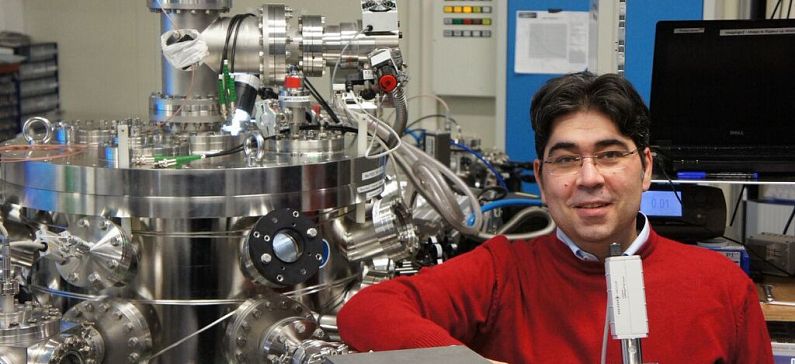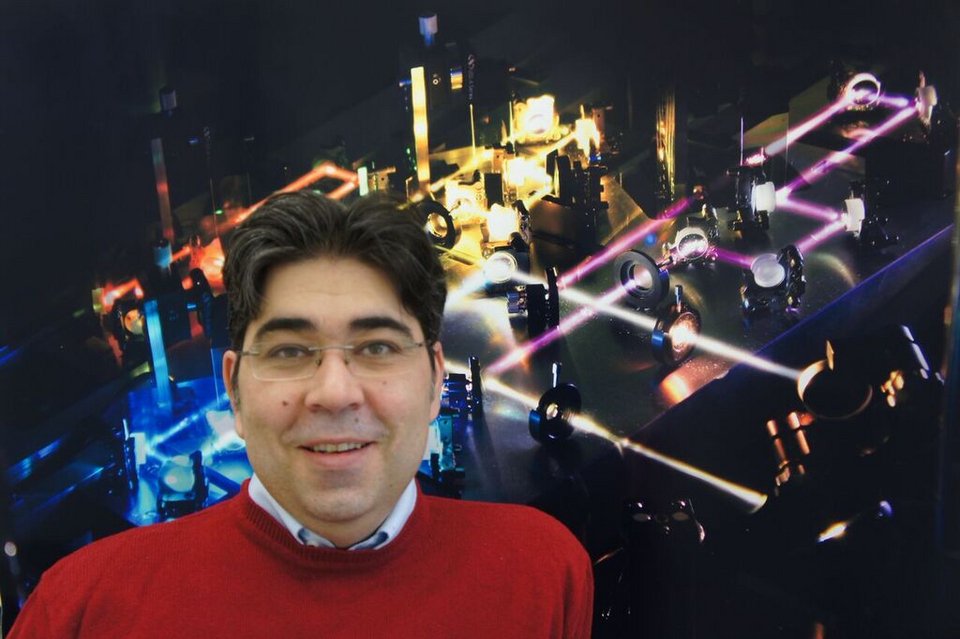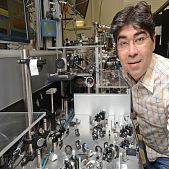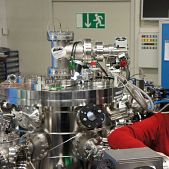
He created the fastest electronic signal
The creation of the fastest electronic signal ever achieved in history was recently achieved by a team of scientists in Germany. The team was led by Eleftherios Goulielmakis, the inventive homogeneous physicist who has excelled abroad in recent years and is breaking new ground in the fields of quantum physics.
The electronic signal (pulse) lasted just 53 attoseconds, or 53 billionths of a billionth of a second. It is not easy for the human mind to grasp how infinitesimal this time is, but it is worth noting that this is a world record in human control of electronic signals in solid materials, which may contribute significantly to better performance in electronics and computer sciences, as well as in the monitoring of microcosmic phenomena.
The researchers from the University of Rostock and the Max Planck Institute of Physics in Stuttgart, led by Eleftherios Goulielmakis, Professor of Physics and head of the Extreme Photonics Group at Rostock, published the paper in the journal Nature. The speed of the signal they were able to achieve is so high that they could “take off” both the speed of a computer or an electronic device, which depends on how fast the electrons move inside the transistors of microprocessors, and the accuracy of electron microscopes. The faster the pulses of the electrons used, the higher the rate of transmission of information to the computer ‘chips’ and the higher the quality of the images in the microscopes.
According to the Greek scientist, who has been working on this goal for years, “the atte-second electron pulse will help ensure that the image resolution of an electron microscope is fast enough to capture electrons in motion. If we create electron microscopes that use atosecond electron pulses, then we will have sufficient resolution not only to see atoms in motion, which is certainly exciting, but even to see electrons jumping between atoms.”

“Τhe atte-second electron pulse will help ensure that the image resolution of an electron microscope is fast enough to capture electrons in motion».
“The immediate and effective use of new materials in information technology, chemistry and environmental protection depends critically on a detailed understanding of the properties of these materials. We are convinced that ultrafast electron pulses can play an important role in unlocking many secrets of the microcosm,” added Eleftherios Goulielmakis.
Synthesizing waves of light
This wasn’t the first recognition for the Greek scientist. In 2012, he was awarded the Gustav Hertz Award by the German Physical Society, an award honouring and encouraging young physicists in recognition of recent scientific achievements. Eleftherios Goulielmakis received the award for his outstanding contributions in the field of attosecond physics, in particular for his work on the attosecond control of light fields and their use for tracing the motion of electrons inside matter, which paves the way towards controlling matter on a nanoscopic scale with unprecedented precision.
Born in Heraklion on the island of Crete, Eleftherios received his Bachelor of Science and Master’s degree from the Physics Department of the University of Crete. He continued his academic studies in Austria and Germany and in 2005, he received his PhD from the University of Munich. He then worked as a researcher in the Division of Attosecond Physics of the Institute of Quantum Optics Max Plank, where he later started his own research group Attoelectronics.
One of his most remarkable scientific achievements is the generation of the shortest isolated burst of electromagnetic radiation lasting less than 100 attoseconds in 2008 and the use of such bursts to trace and observe the motion of electrons in atoms in 2010.
During the last years, Dr. Goulielmakis and his team focus on developing the world’s first light field synthesizer, an experimental apparatus that synthesizes the field waveform of a light pulse, just like the musical instrument synthesizes music.
In 2016, his team including scientists from the Max Planck Institute (MPI) of Quantum Optics in Garching, Germany, Texas A&M University in Texas, and the Lomonosov Moscow State University, discovered that electrons in crypto-atoms need just over 100 attoseconds (attoseconds) to respond to extremely short pulses of light. It was the first direct measurement of the electron’s innate sluggishness. The publication was also published in the journal Nature. Among other honours, in 2007 he was awarded the “G. Foteinou” prize of the Academy of Athens. He is currently a professor at the University of Rostock.











